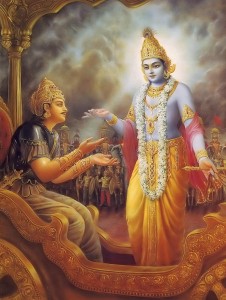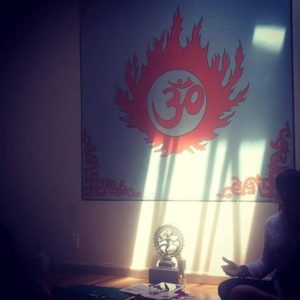Attachment breeds desire. From desire anger is born. Anger leads to delusion, from delusion, forgetfulness, from forgetfulness, the destruction of intellectual discernment.”
Bhagavad Gita, II:62/63
I have been thinking about anger and the things i have learned about it. The above quote from the Bhagavad Gita is succinct. If we deconstruct the emotion we will always find intense attachment at the root of it. Attachment, or clinging, must be recognized and relinquished. I have found that this process is a lifelong practice. The effort of letting go is a daily and even moment to moment continuous releasing. As the stages of life develop, there are new unproductive attachments developing along with them.
When we do yoga poses they are a way of letting the body learn to release gracefully, and these physical gestures are meant to support the mental gesture of detaching. The hatha practice helps us become conscious of the physical correlates of our clinging. When we practice relaxing to let go, we notice tension in the jaw and release it, the tension in the shoulders and drop it, we notice the we are holding our breath and we consciously breathe.
Remember the long breath is a way to override the sympathetic nervous system, the“Fight or Flight” anger-filled reactivity, which has limited usefulness. When we lengthen the breathe we trigger the parasympathetic relaxation aspect of the nervous system which offers more spacious mindfulness, the space to choose appropriate actions in a situation. Relaxation in this case is another word for detachment. So you can produce a detached, relaxed, inner environment by conscious breathing. You could take a detaching full breath right now.
One of the definitions of yoga from the Bhagavad Gita is “Yoga is skill in action”. The calm we cultivate creates skill, the grace under pressure that is mastery. It is helpful to consider, too, that remaining calm when in a dispute or confrontation is highly conducive to victory. One of the lengthening breaths we practice in yoga is called “ujjayi” – meaning, victorious.
Patanjali, who wrote the Yoga Sutra suggests:
When disturbed by negative thoughts, opposite positive
ones should be thought of. This is pratipaksha bhavana.
When violence and hate are removed from within the practitioner there is peacefulness that influences others to desert hostility in their presence.”
Swami Muktananda used to say: “Get angry at your anger.” And I have found that it actually works, if you have the presence of mind to do that cognitive gesture, which is somewhat akin to a difficult inversion in hatha yoga. And it was amazing to watch him in action when he was “angry”. Sometimes he would yell at people and even strike some of them (never the women) with a stick! It was like watching a big storm, something natural and totally impersonal and awe inspiring. The day came when he turned some of that wrath on me and finally yelled “get out of here!” to me. At the moment he said those words, I felt myself leave my body and entirely vacate my habitual sense of self, my ego, and I became temporarily aware of the all pervasive identity with the universe.
For the day to day work of liberation, I find that the best solution to anger is it is to pinpoint what outcome I am clinging to and to gently, gradually, let it go. Breathe in, recognize the feeling of attachment, compassionately recognize the fear beneath that, and gently breathe out to release it, release the fear. Repeat as necessary.











Leave a Reply